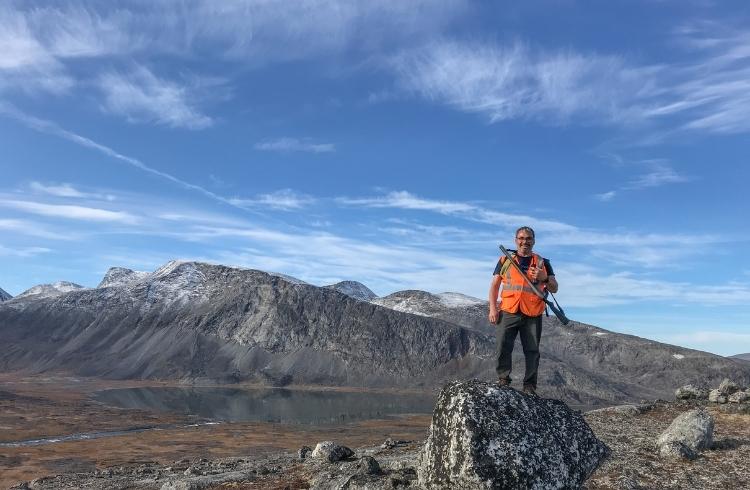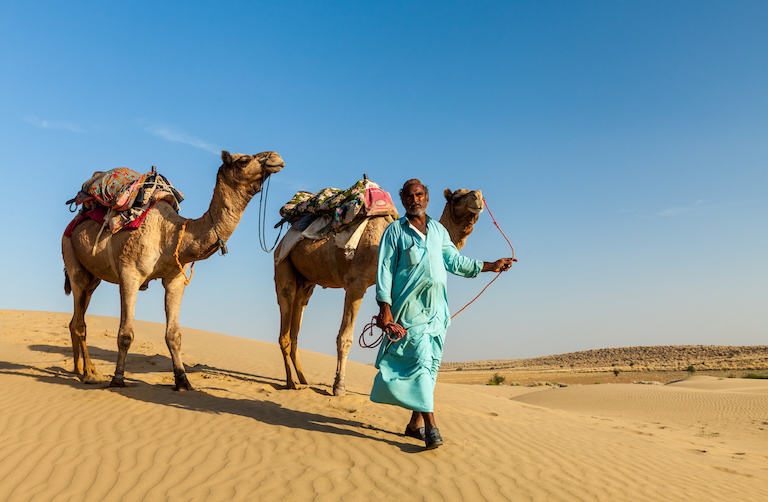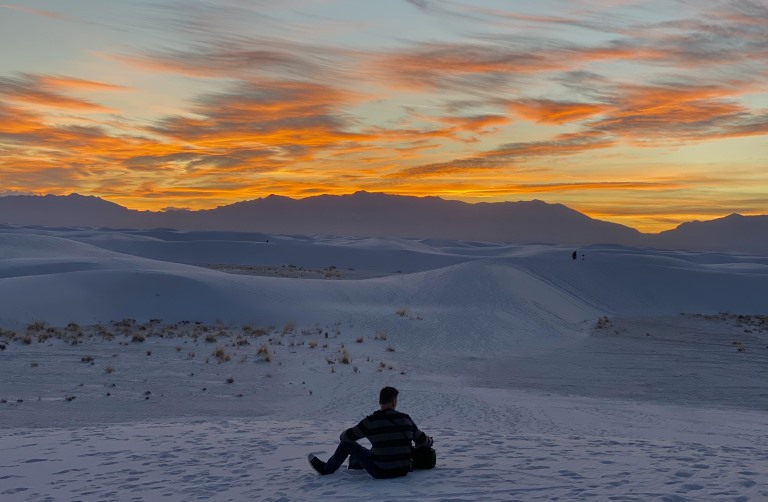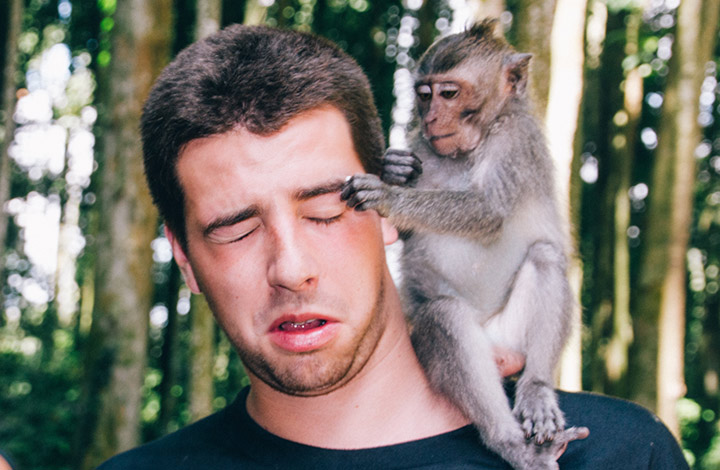5 Fantastic Indigenous and Native-owned Travel Experiences
These Indigenous-led tour companies provide travelers with rich, fulfilling experiences while making a difference in their own communities.
 Photo © Getty Images/SheraleeS
Photo © Getty Images/SheraleeS
According to the Adventure Travel Trade Association, one of the top travel trends in 2022 is diversity and inclusion, which includes welcoming Indigenous groups into the travel conversation, sometimes for the first time. While we should all celebrate the fact that the Hawaii Tourism Authority is now majority-led by Native Hawaiians and that Tourism Australia has developed a Discover Aboriginal Experiences program – these are big wins! – we shouldn't leave it up to the powers that be to make the change we want to see.
We, as individual nomads, have the power – and responsibility – to seek out and support Indigenous and Native-owned companies, tours, and initiatives when we travel. Here are a handful of Indigenous companies that are making waves in the travel world while also making a difference in their communities.
- Bike touring in Navajo Nation
- Cruising through the Inuit homeland
- Female-run community tourism in the Amazon
- Discover Aboriginal culture in Australia
- Hike the highest peak in Brazil
Bike touring in Navajo Nation
Until recently, bike tours weren't even legally recognized as a permitted tourism category in the Navajo Nation but Dzil Ta’ah Adventures recently changed that. After jumping through hoops and cutting red tape, they were finally granted a permit in 2020 to run overnight bike-packing trips on Navajo land. Not only do Navajo history and creation stories provide context for these desert landscape adventures, but all tour revenue is reinvested back into Navajo communities. Profits are directed toward a Navajo youth bike program that aims to help train the next generation of Navajo bike-tour guides and to help instill an even stronger connection with their land and ancestors.
So far, they've only gotten one tour approved, a 44-mile multi-day tour on the southern Monument Valley loop and to Hunts Mesa that has about 1,547 feet of elevation gain. Though the terrain itself isn't especially difficult, the ride is only recommended for intermediate to advanced riders due to the amount of water and gear one needs to carry. After all, there are no supermarkets or service stations in the desert but that's part of the appeal.
Cruising through the Inuit homeland
Arctic Canada is a massive region where small, spread-out communities are separated by hundreds of miles of land. As few to no roads connect them, the best (and sometimes, the only) way to explore them is by ship. While many large cruise companies operate in the region, only one has an Inuit expedition leader guiding travelers through their sacred homeland. Adventure Canada may not be an Indigenous-owned company but their long-established commitment to placing Inuit staff both as guides on the ground and in positions of power within the company has translated to contributing to meaningful change across Arctic Canadian communities.

Not only do Inuit guides share their history and culture with travelers during day hikes and kayaking trips, but when Adventure Canada stops at cruise ports in Inuit towns, they partner with local Inuit-run businesses on the ground. This strategy both funnels money into these rarely-visited communities while also creating meaningful interactions between local residents and travelers, who can visit independent shops, learn how community food programs operate, and see how youth initiatives are helping combat climate change on a local level.
Female-run community tourism in the Amazon
Just a four-hour drive from Quito, Ecuador is one of the easiest-to-reach sections of the Amazon – no gas-guzzling airplanes required! Here, near Puerto Misahuallí, several community tourism centers are run by Quechua women whose goal is to offer travel experiences that help preserve traditional customs and create educational and professional opportunities for Quechua women. One of these centers is Sinchi Warmi (which means “Strong Women” in Quechua), a rustic lodge that immerses guests in local culture and customs like harvesting cacao and weaving bracelets out of plant fibers sourced from on-site gardens. Staying and dining at these lodges helps support Indigenous- and female-owned businesses, even if you spend your entire stay relaxing in a hammock. That said, to get even more out of the visit, you might also consider joining a river tubing trip or a scenic boat ride to a nearby rainforest animal shelter.
Discover Aboriginal culture in Australia
Sometimes, it can be difficult to find specific travel experiences and even if you find an ethical, sustainable, and perhaps even Indigenous-owned tour operator, cookie-cutter itineraries might not actually include the specific activities that you’re looking for. That’s where the non-profit, Welcome to Country, fits in. The platform was launched to connect travelers with a wide range of educational and cultural experiences across Australia. All 200 experiences were created and are run by Australia’s Aboriginal and Torres Strait Island Peoples, including half-day hikes, paddle boarding and sandboarding sessions, and story-telling walks, and five-day female-only immersion at a Yolŋu Homeland community.
As a means to promote even more economic self-sufficiency and sustainability among Indigenous-owned businesses, Welcome to Country also serves as a virtual marketplace, where travelers can purchase everything from Aboriginal-produced luggage and beauty products to wool rugs to laurel cutting boards (they only ship within Australia).
Hike the highest peak in Brazil
Serious hikers looking for an uncrowded alternative to more popular peaks can now head to the Cabeça do Cachorro (Dog’s Head) region of the Brazilian Amazon. At 9,822 feet, Pico da Neblina is the highest peak in Brazil, some 525 miles away from the nearest big city (and a two-hour drive and six-hour boat trip from the nearest village. Though the mountain has been closed to tourists for the past 20 years, in March 2022, the mountain finally re-opened; this time, under 100% Indigenously-owned management. The local Yanomami are now managing all activities in the area (all of which will adhere to strict eco-tourism principles), and tribal members have organized to become guides, boat pilots, porters, and cooks for the expeditions.

While the tribe has not yet formed its own Indigenous-led tour operation, female-owned Amazon Emotions, is one of only three companies authorized to lead tours here. The 10-day trek (which includes six to 10 hours of hiking per day) is not for the faint of heart. Full-on mountain climbing equipment such as ropes and crampons aren’t required but the gradient is steep and some days can get extremely windy, cold, foggy, and/or rainy.
Related articles
Simple and flexible travel insurance
You can buy at home or while traveling, and claim online from anywhere in the world. With 150+ adventure activities covered and 24/7 emergency assistance.
Get a quote


1 Comment
My hobbies is to Travel the World